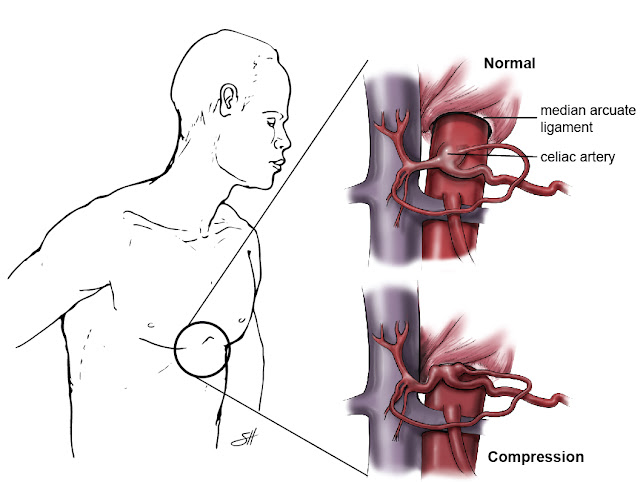Celiac artery compression syndrome is a rare abdominal disorder that goes by many names, including celiac axis syndrome, median arcuate ligament syndrome and Dunbar syndrome. The celiac artery runs from the stomach along the border of the small intestine, providing blood flow to these areas. It can become compressed by the median arcuate ligament that is attached to the diaphragm. When this happens, blood flow to the abdomen may be decreased when patients breathe out.
Unexplained weight loss and abdominal pain
Two symptoms are most commonly associated with CACS:- abdominal pain after meals
- weight loss
One sign of CACS found when the patient is examined by a health care provider is a turbulent blood vessel in the abdomen known as a bruit. This can be found by listening to the abdomen with a stethoscope.
Treatment of CACS
According to Okkes Kirahan in an article on CACS, surgery is the first-line treatment. The median arcuate ligament is divided to release pressure on the celiac artery. Dr. Scovell reports about 81% of patients are cured of their abdominal pain and 67% are able to regain lost weight after surgery. However, surgery does not always fix the problem. People most likely to respond to surgery are:- between 40 and 60 years old
- have abdominal pain after eating
- have lost more than 20 pounds due to CACS
Although diagnosis of CACS may be difficult, patients should discuss any unusual symptoms with their healthcare provider. Anyone experiencing unexplained weight loss or abdominal pain should schedule an appointment for evaluation.
